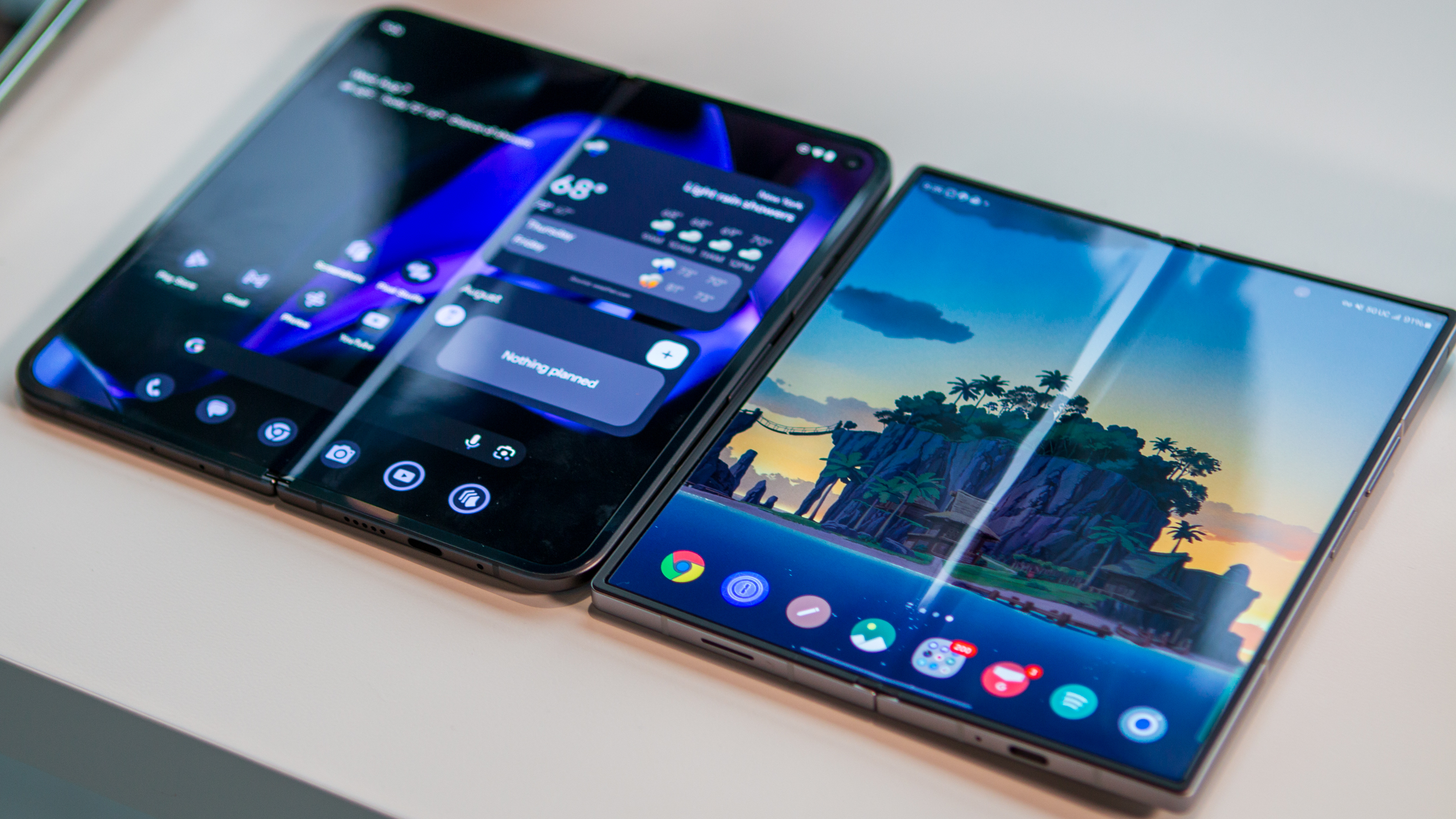Google Pixel Watch vs. Apple Watch Series 8: Which smartwatch is best?
Google has finally launched its Pixel 7-linked smartwatch, but how does it compare to Apple's 8th-gen model?
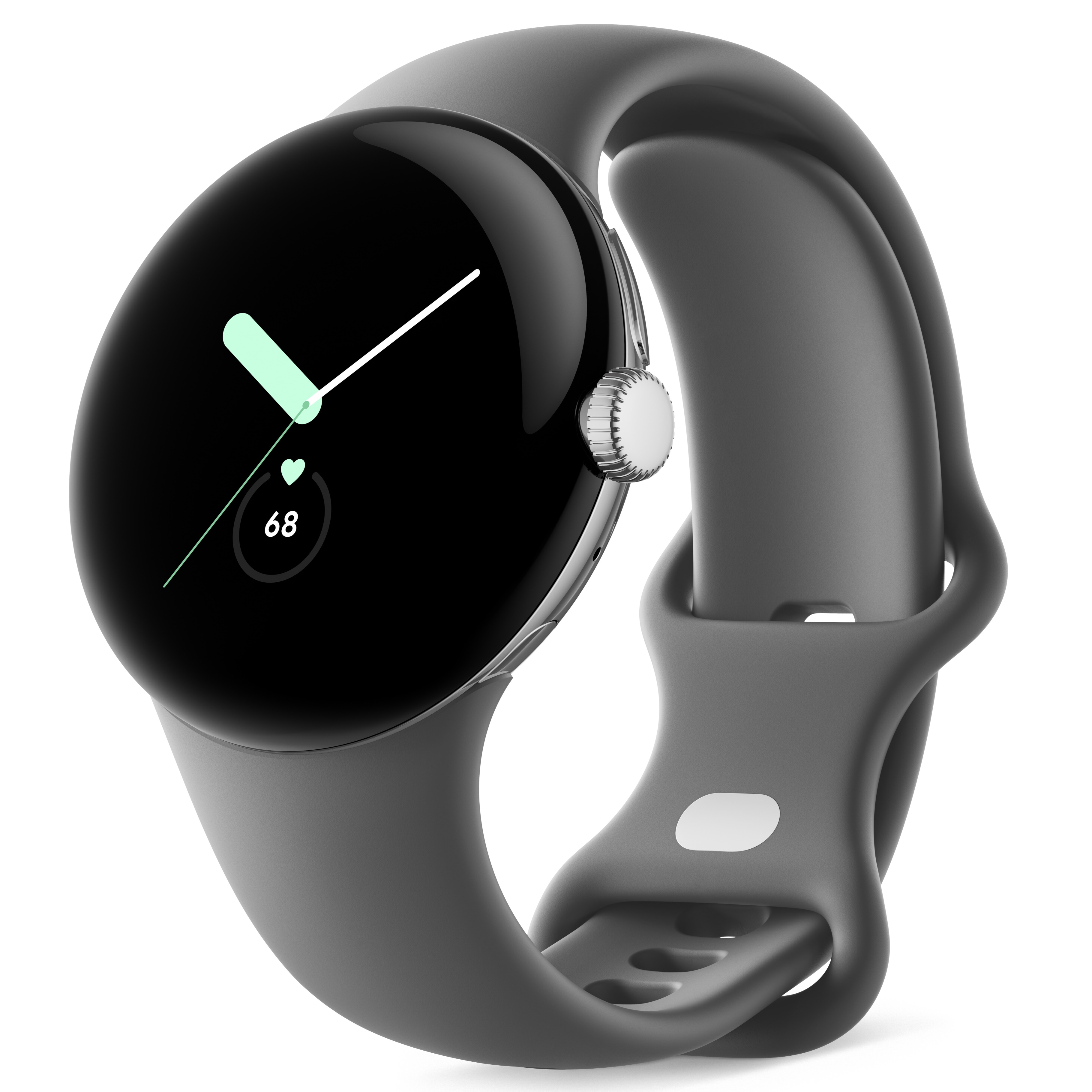
Worth the wait
The Google Pixel Watch finally arrived after years of rumors with an attractive design, Fitbit Premium integration, and a one-day battery life. It links closely with your Pixel or Android phone and can even work on its own for mapping and messaging if you buy the 4G version. It's pricey for an Android watch but less expensive than an Apple Watch.
For
- Gorgeous edge-to-edge design
- Bright, pixel-rich display
- 2GB/32GB memory
- Fast USB-C recharge
- Stylish band options
- More affordable cost
Against
- Android-only
- Only one size option
- Last-gen chipset
- No temperature sensor
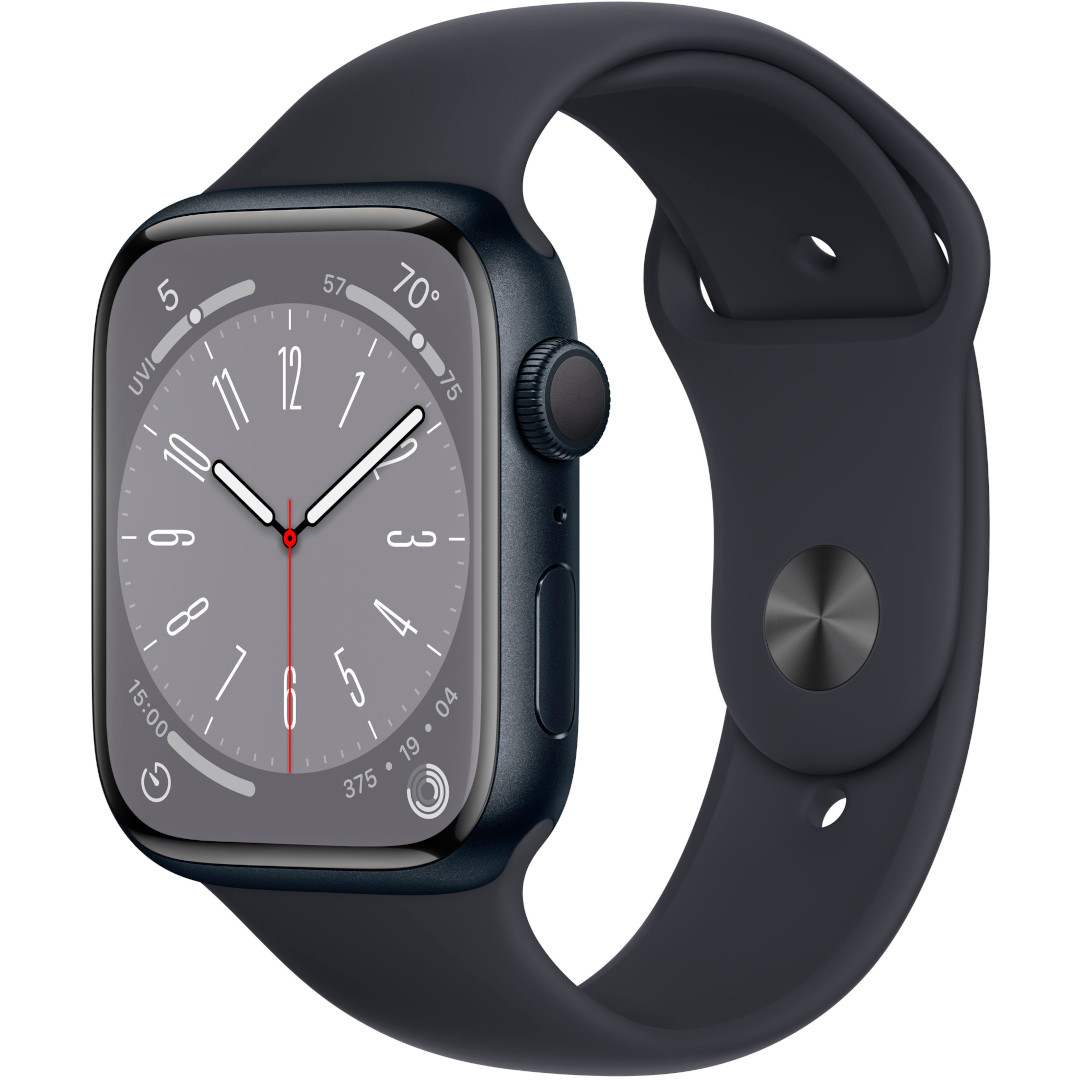
Consistent dominance
There's a reason why the Apple Watch is so popular with iPhone owners year after year. Aside from being a stylish status symbol, the Series 8 has cutting-edge performance in a compact frame, though this does come at the expense of battery life.
For
- Popular thin-bezel squircle design
- 1,000-nit display
- Top-class performance
- Multiple size, material, band options
- Crash/fall detection and emergency SOS
- 41mm model is lighter
Against
- iOS-only
- More expensive
- Unreliable battery life
- No fitness data algorithms
After years with only the Galaxy Watches for true competition, the Apple Watch Series 8 now has to contend with a new rival, the Google Pixel Watch. Both watches are exclusive to iOS and Android, respectively, so choosing which smartwatch to buy is as simple as knowing which phone you have. But maybe a new Android watch option is enough to consider switching ecosystems, or you just want to have bragging rights that your brand's watch is better. Whatever the case, we're breaking down how the Google Pixel Watch and Apple Watch Series 8 compare in specs, design, software features, and pricing.
Google Pixel Watch vs. Apple Watch Series 8: Pricing and models
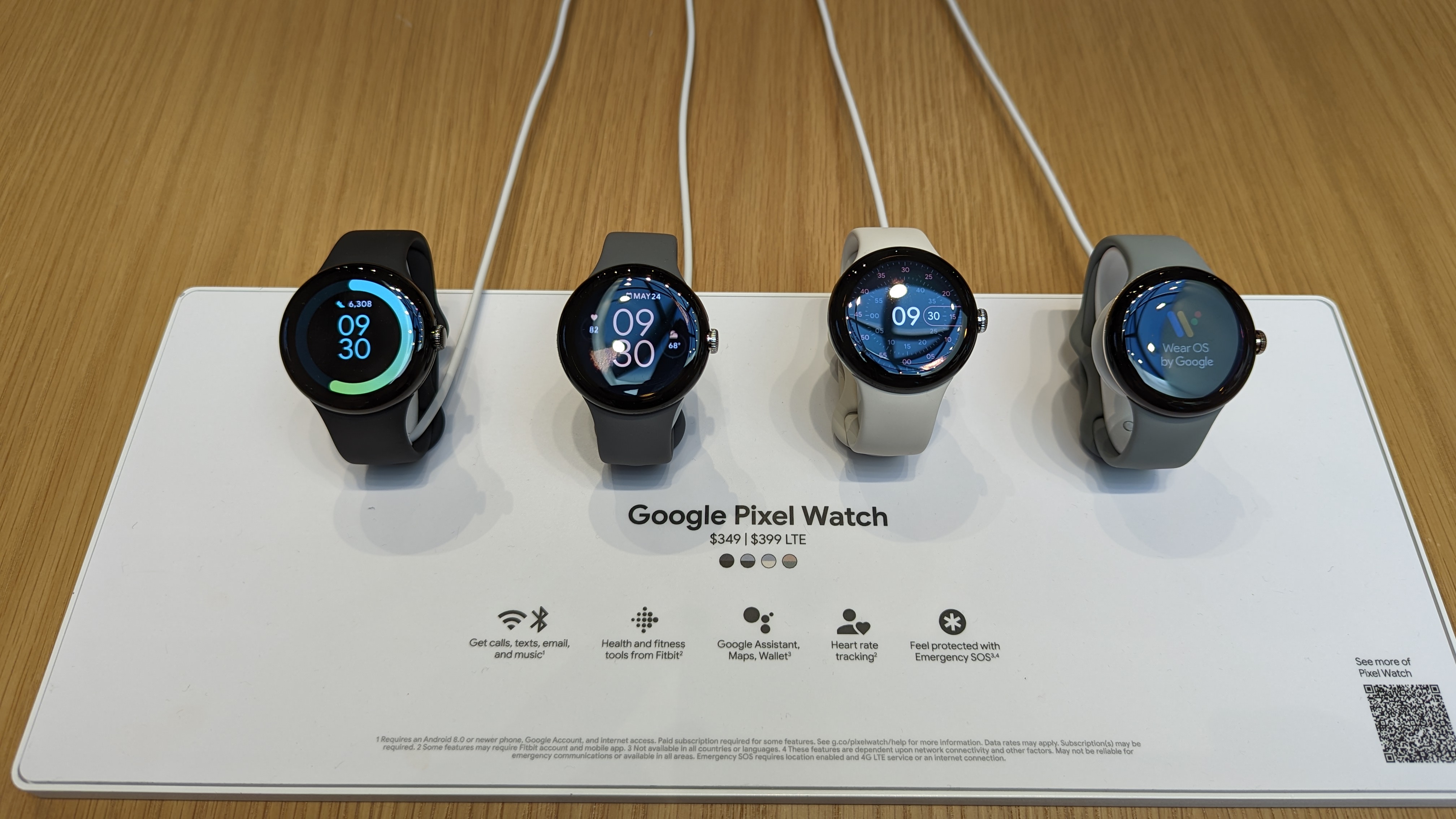
The Google Pixel Watch comes in just one size (41mm) and finish (stainless steel made from 80% recycled material). As such, you only have two price options: $350 or $29.17/month for the standard Wi-Fi version or $400 or $33.33/month for the 4G/LTE version.
The Apple Watch Series 8 starts at $400 for the 41mm Aluminum finish model with Wi-Fi or $430 for the 45mm version. You add an extra $50 for a Solo Loop band and an additional $100 for Cellular support. An upgrade to Stainless Steel will cost you $700, though it comes with Cellular built-in. And the Apple Watch Hermès will cost $1230.
Google Pixel Watch vs. Apple Watch Series 8: Design and bands
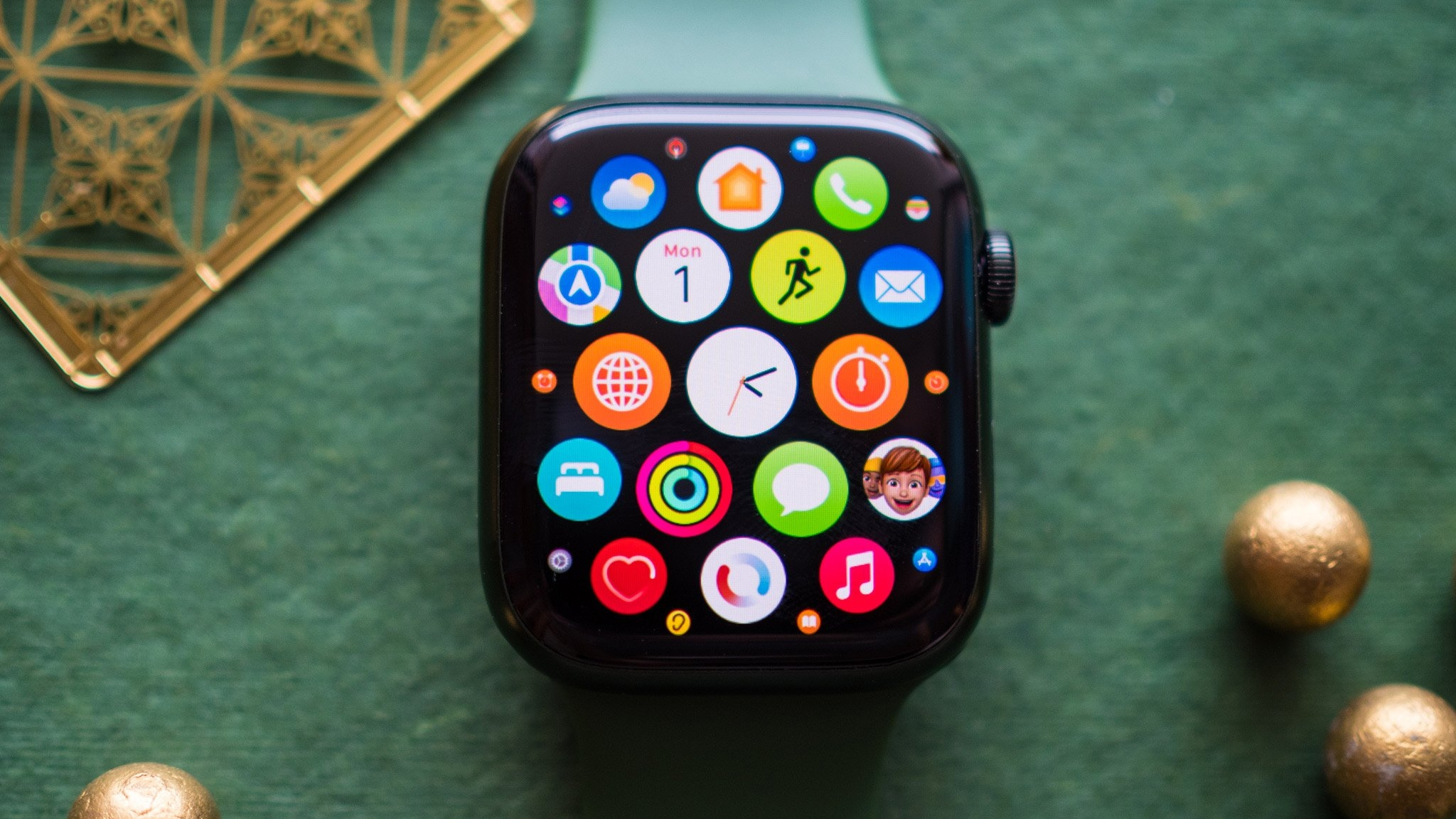
Apple's squircle design is a classic at this point, but some people may find it stale. Starting with the Series 7 last year, it shrunk the bezels to give you more screen space with the same footprint. The Series 8 has a near-identical design, complete with the same upper-right crown, lower-right power button, and speaker grille — and even the same dimensions and weight.
Google's Pixel Watch design channels the usual circular look of most Android smartwatches, but Chris Wedel, our team member who got to test the Pixel Watch in NYC, said it "looks even more like a round Apple Watch in person." The rounded edge-to-edge design does mirror how the thin-bezeled Apple Watch screen extends over the edges a little. And you have a single rotating crown in the center-right and a recessed button above it.
As such, weighing the "quality" of the Pixel Watch and Apple Watch designs is pretty subjective. We think both watches have a premium look that other watches, like the Galaxy Watch 5, fall short of. But only you can decide if the Pixel or Apple Watch looks better.
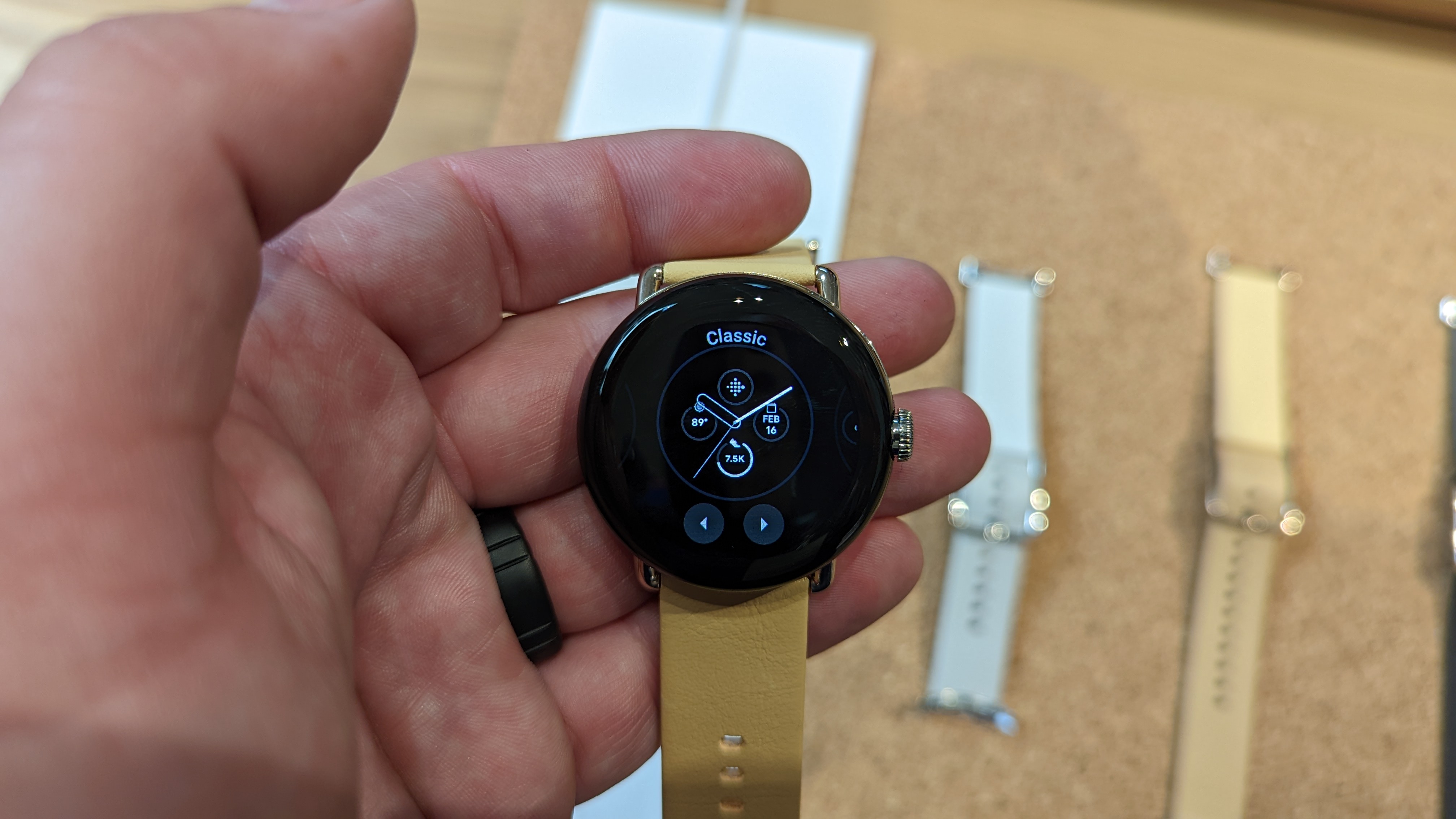
As for your band options, Apple has a wide variety focused on fitness, fashion, and an easy fit which are generally quite popular, though proprietary; our friends at iMore have a list of the best Apple Watch bands from both Apple and third parties if you're interested.
Turning to the Pixel Watch bands, Chris Wedel got to try several of Google's proprietary watch bands. He described the Active band that comes in the box as having "a pleasantly soft feel" and just the right thickness to feel strong but not stiff. The two leather bands "feel high-quality and like they will wear nicely over time," and he liked the look of the woven and stretch bands, which "incorporate colors from the rest of the Pixel lineup into them."
Unfortunately, because Pixel Watch bands are proprietary and the brand is so new, we haven't found any third-party band options to recommend as of yet.
Google Pixel Watch vs. Apple Watch Series 8: Specs, sensors, and battery life
| Header Cell - Column 0 | Google Pixel Watch | Apple Watch Series 8 |
|---|---|---|
| Display | 1.6-inch AMOLED (320ppi) | 1.6- or 1.8-inch Retina LTPO OLED (352x430; 396x484) |
| Brightness | Up to 1,000 nits | Up to 1,000 nits |
| Material | Stainless steel | Aluminum or stainless steel |
| Bands | Woven, Crafted Leather, Two-Toned Leather, Active, Stretch | Solo Loop, Sport Band, Sport Loop, Nylon, Leather, Stainless Steel |
| Navigation | Touchscreen, three side buttons | Touchscreen, one crown, one button |
| Processor | Exynos 9110 SoC with Cortex M33 co-processor | S8 SiP with 64-bit dual-core processor |
| Storage | 32GB | 32GB |
| Battery | 294 mAh; Up to 24 hours | 282mAh or 308mAh; Up to 18 hours |
| Charging | USB-C | USB-C |
| Sensors | Accelerometer, altimeter, ambient light, blood oxygen, compass, ECG, gyroscope, heart rate monitor | Accelerometer, ambient light, barometer/altimeter, compass, ECG, gyroscope, heart rate monitor, pulse oximeter, thermometer |
| Connectivity | LTE (optional), GPS, GLONASS, GALILEO, BeiDou, Bluetooth 5.0, Wi-Fi, NFC | LTE (optional), GPS, GLONASS, GALILEO, BeiDou, QZSS, Bluetooth 5.3, Wi-Fi, NFC, Ultra wideband |
| Compatibility | Android (Google Assistant) | iOS (Siri) |
| Protection | 5ATM, Custom 3D Corning Gorilla Glass | IP6X, WR50, crack-resistant crystal |
| Size | 41 x 41 x 12.3mm | 41 x 35 x 10.7mm; 45 x 38 x 10.7mm |
| Weight | 36g (without band) | 31.9g or 38.8g |
Until we fully review the Pixel Watch, we can't say for certain how its four-year-old Exynos 9110 SoC is counterbalanced by its co-processor and the massive 2GB of RAM, more than the 1.5GB you get in the Galaxy Watch 5 Pro. Our brief hands-on with it made the Pixel Watch UI look quite fluid, but outside of demo conditions and first-party apps, we can't be certain how it'll run. We'll update this post once we know more.
Similarly, we haven't officially reviewed the Apple Watch Series 8 yet. Still, its S8 chip is virtually exactly the same as the S7 in last year's watch, so we can speak to its performance pretty definitively. Our reviewer said it "is fast and fluid in daily use, and I didn't see any slowdowns in the month I used the smartwatch," with the S7 chip giving it "an edge over its Android rivals."
Aside from the different geometric shapes, both watches have very comparable displays. Comparing the Pixel Watch display to the Apple Watch Series 8's, their pixels-per-inch are nearly the same (320 vs. 326), as is the max brightness (1,000 nits). The Apple Watch display has Ion-X protection that makes it shatter-resistant (according to Apple), but it's hard to say how that'll compare to Google's custom 3D Corning Gorilla Glass without an expensive stress test. But only the Apple Watch has a dust resistance rating.
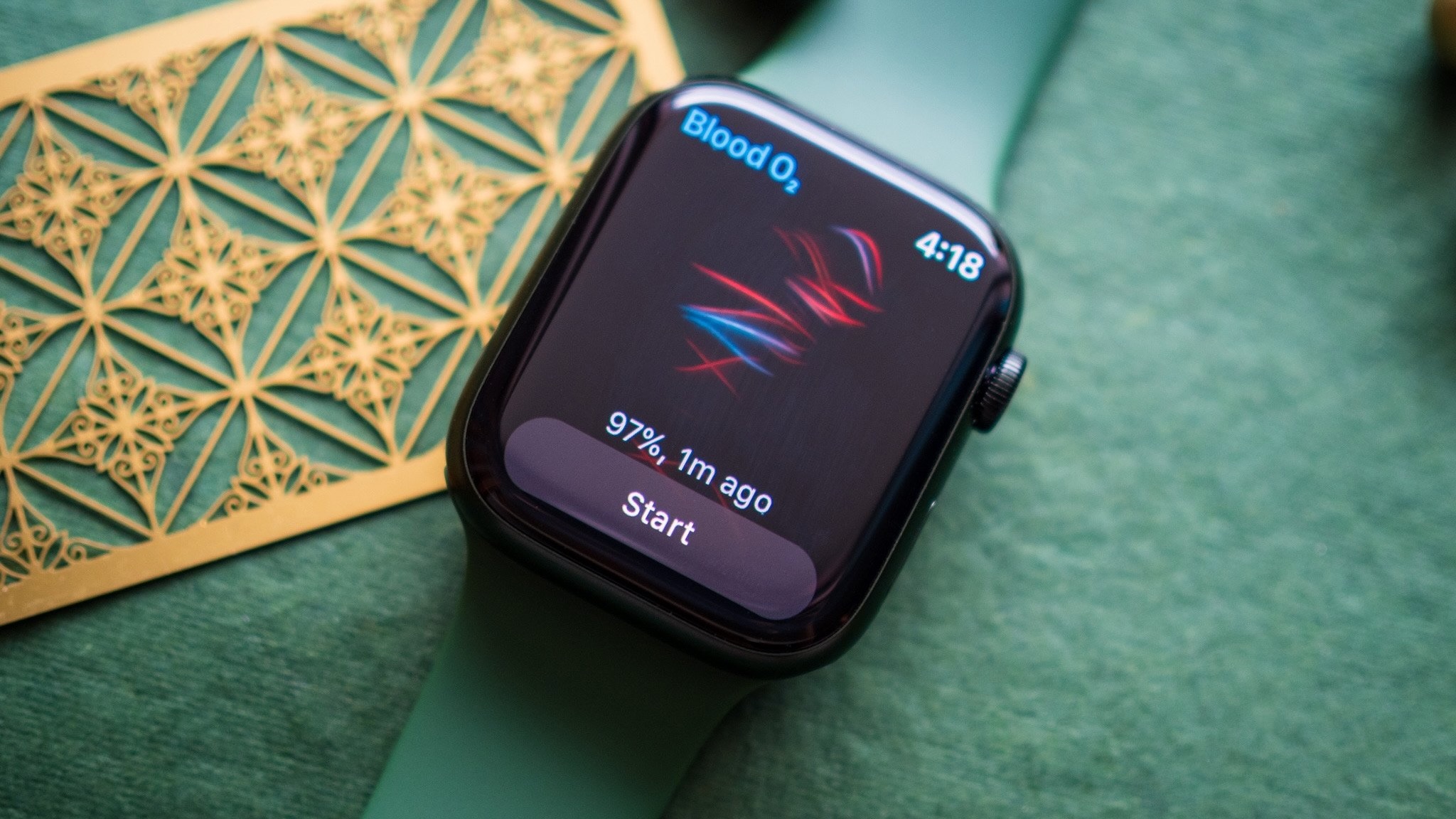
As our specs table above shows, both watches have nearly the same sensors, GPS tracking, and connectivity software, including continuous heart rate and SpO2 tracking, as well as ECG testing for irregular heartbeats. They even share the same storage. Given all their similarities, it wouldn't be surprising to learn Google tried to emulate its rival's features in its own design.
Apple Watch Series 8 does have a temperature sensor for menstrual tracking that could, in theory, be used for other health monitoring in the future. In contrast, the Pixel Watch didn't get this feature — even though the Google-owned Fitbit Sense 2 did.
Apple also wins with a Bluetooth 5.3 standard over Google's Bluetooth 5.0, which will generally make the connection between the watch and phone more energy-efficient and speedy. Its Ultra Wideband support offers better precision tracking for pinging your Watch's location inside a couch cushion or wherever. Google's one advantage here is that its LTE upgrade only costs $50, whereas you'll pay $100 for the privilege with Apple.
In terms of battery life, Google estimates that its watch can last six hours longer than Apple's on a single charge. We can't confirm its claims until the review embargo lifts, so we'll simply point out that both watches will need daily charges regardless. To power demanding apps that would normally need a smartphone to work, you need a battery-guzzling processor and RAM. Apple does offer Low Power Mode through watchOS 9 now, so it should, in theory reach 36 hours with that active.
Once their batteries are low, the Pixel Watch can charge to 50% in 30 minutes, while the Apple Watch can hit 80% in 45 minutes. Both use USB-C charging, which makes refilling their capacity relatively breezy compared to other models.
Google Pixel Watch vs. Apple Watch Series 8: Features and fitness
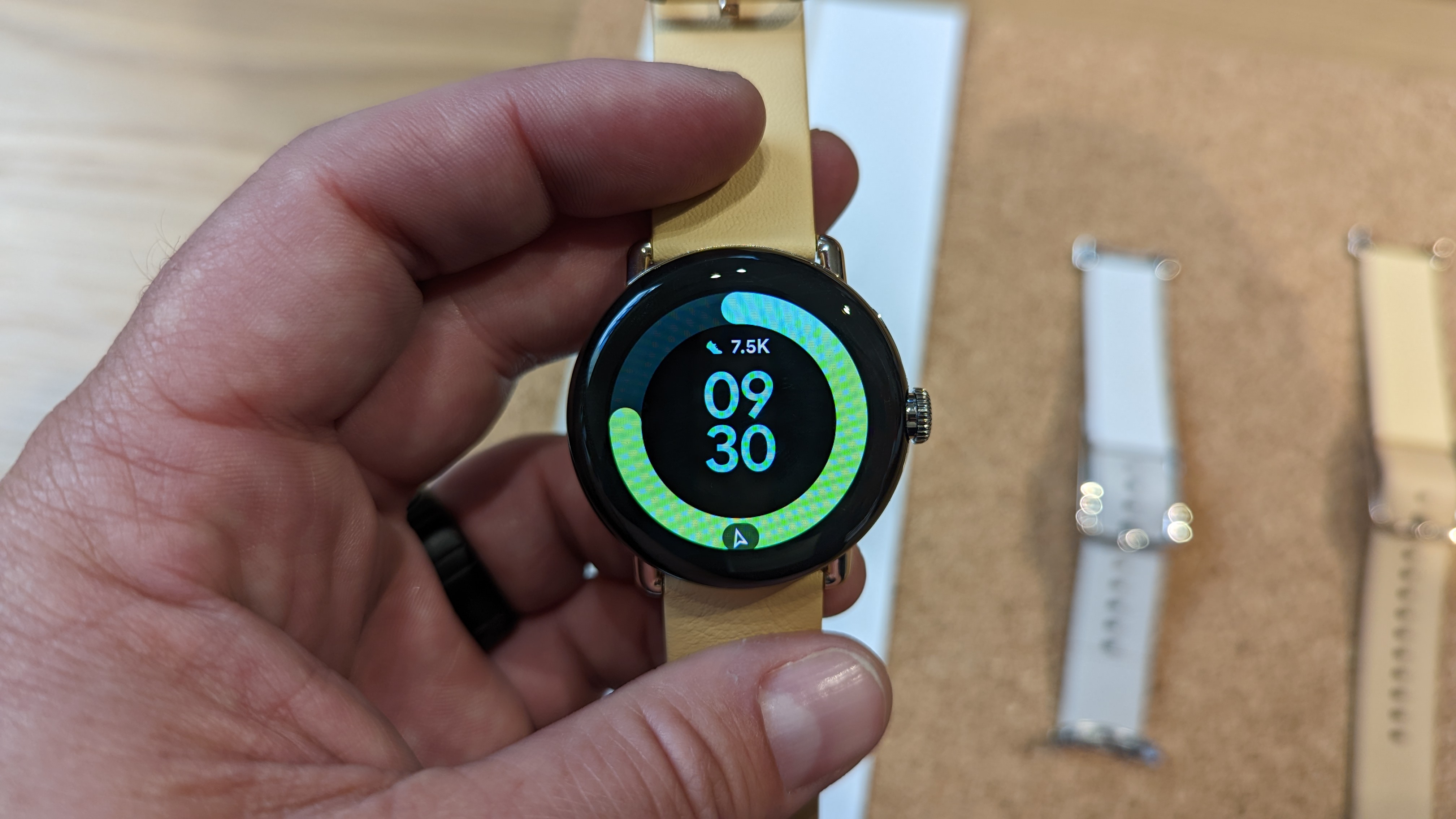
A blow-by-blow breakdown of watchOS 9 vs. Wear OS 3 would require its own separate article, too long to briefly summarize here. Suffice it to say that all of the software you're used to on either phone interface makes an appearance on your watch. Google has Wallet, Maps, Assistant, and so on, while Apple has its own equivalents. And both operating systems support a wide range of third-party apps, though Apple may support more popular options because of its Watch's greater popularity up to this point.
The most important aspect of watchOS 9 is that it greatly enhanced the watch's fitness tracking software, adding tools like custom workouts, heart rate zones, new sports modes like triathalons, and new workout views showing metrics like Running Power and Form. Plus, you got better sleep tracking and AFib data history. All of this information is available for free, though you can pay for a Fitness+ subscription if you want guided at-home workouts.
For comparison, the Pixel Watch does have Google Fit for free workout data, along with third-party apps, but the biggest fitness boon it has is Fitbit Premium integration. This gathers your health and fitness data and produces reports telling you your Daily Readiness Score, Stress Management Score, a Wellness Report, and other data. And it also gives you guided workouts and general courses to help you improve over time.
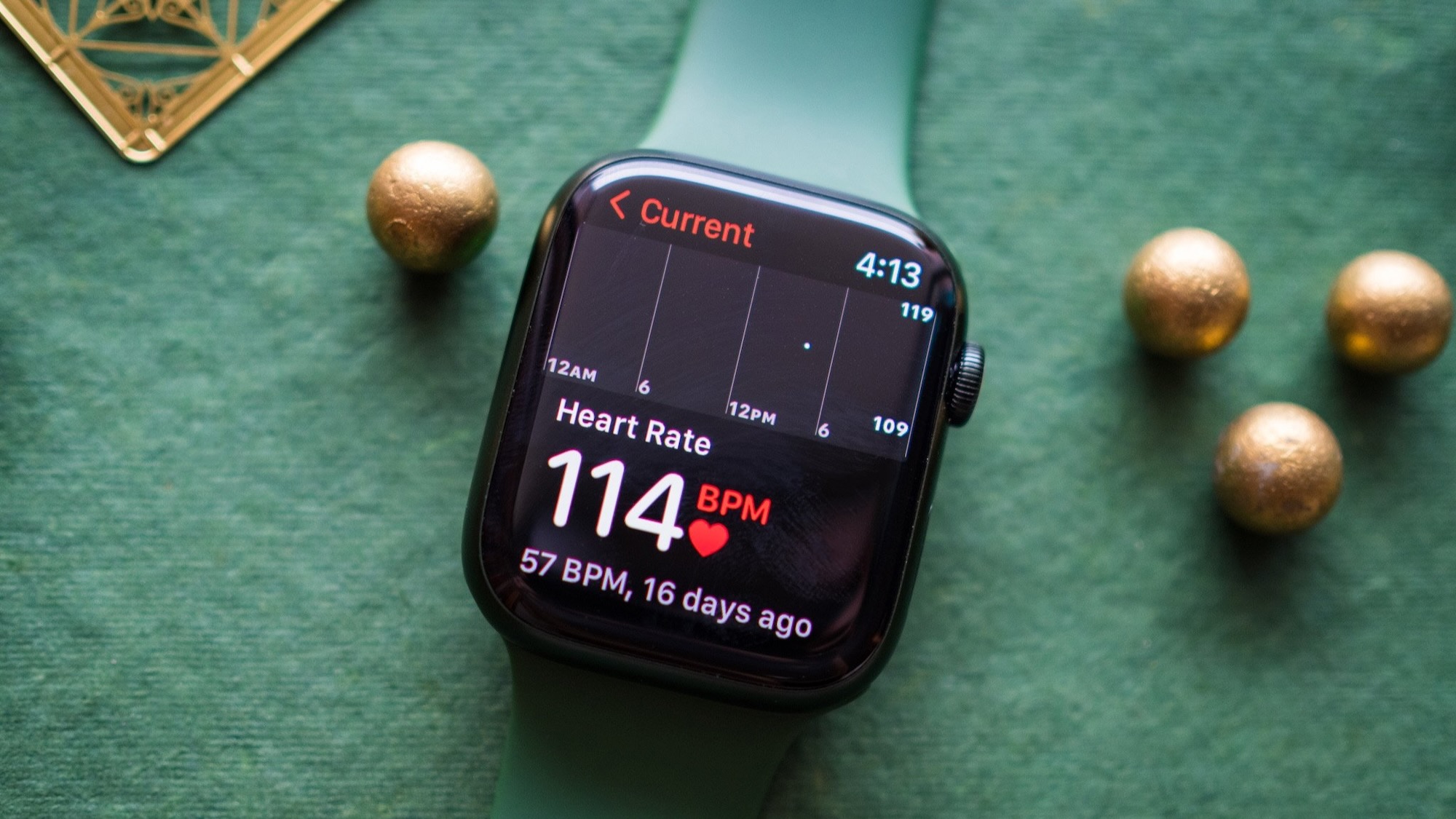
Apple's guided workouts have very high production values and can appear on your Apple TV or other televisions through AirPlay, with your Apple Watch workout data appearing in the corner. We've heard rumors Google could sync Wear OS with Google TV in the future, but we can't count on it happening soon.
Where Fitbit Premium wins is in its ability to contextualize your current fitness and effort levels, warning you if you're over- or under-training. Apple just tells you to keep closing your rings day after day, without the algorithms to detect if you're doing too much.
Apple does have its own Collections, similar to Fitbit Guided Programs, that help you "Run Your First 5K" or "Improve Your Posture with Pilates." But Fitbit has more options, especially for harder training like "Abs and Core" or "Dance Cardio and Kickboxing."
We'll have to test the Pixel Watch to see how it compares to other Fitbits and to fitness smartwatches in general. But it could strike a good balance between a lifestyle and fitness watch if you're willing to pay for the monthly or annual subscription after the free 6-month trial runs out. Apple Fitness+ doesn't interpret your data as of yet but is probably the better option for workout videos, while the Pixel Watch has better outdoor workout guidance.
Google Pixel Watch vs. Apple Watch Series 8: Which should you buy?
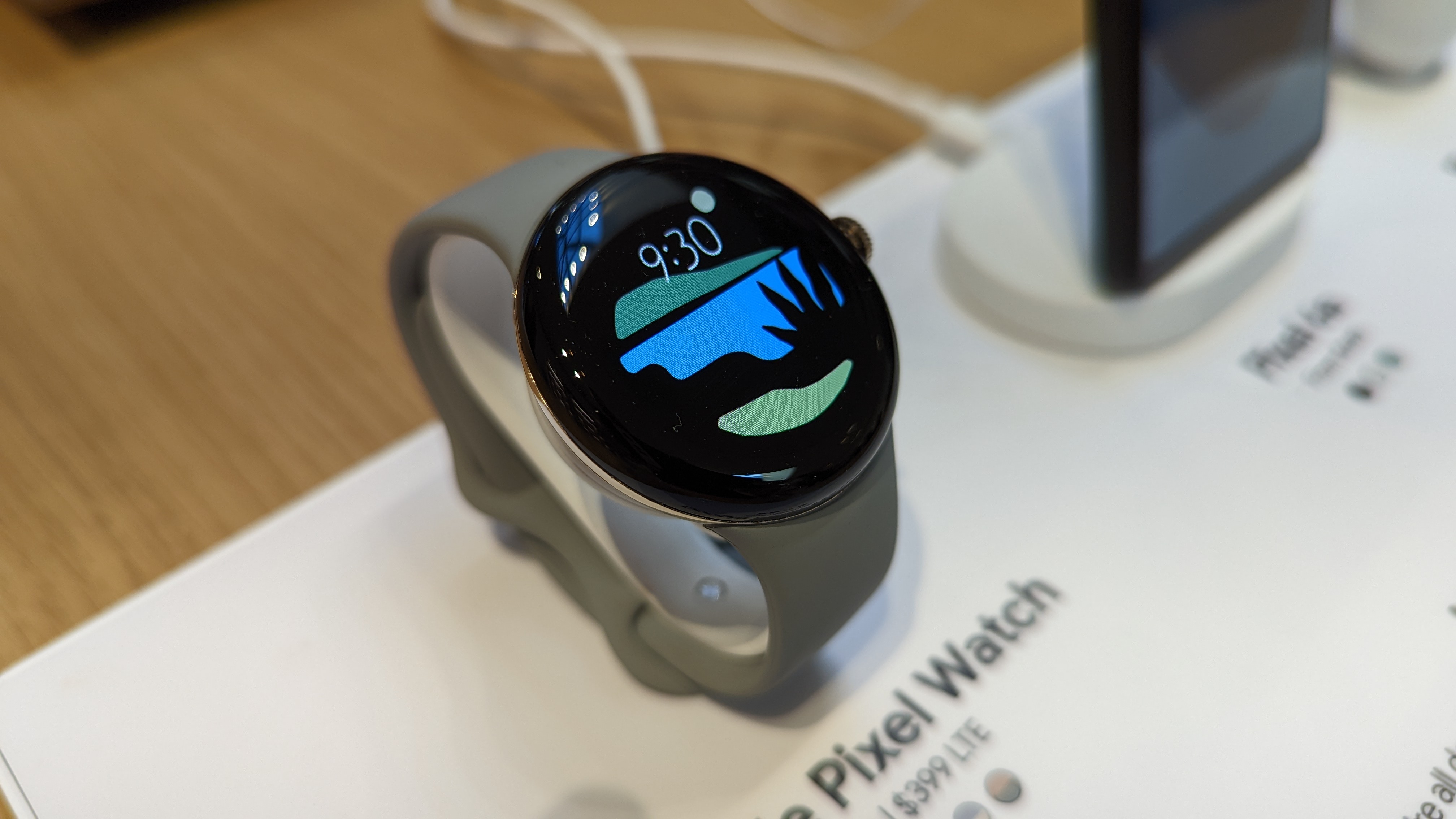
The same statement from this article's beginning still applies. If you own an iPhone, buy an Apple Watch Series 8. If you own an Android phone, your best two options are the Google Pixel Watch and the Samsung Galaxy Watch 5; Pixel 7 owners in particular will want the Pixel Watch.
Apple and Google's smartwatches have the best integration with their respective smartphones, and each has an optional fitness subscription that costs roughly the same. So which is better? Despite our love of all things Android, it's difficult to argue against the Apple Watch's unyielding quality year over year. But so far, our experiences with the Pixel Watch have been very positive, and Google apps on your wrist will have a universal appeal even to die-hard Apple fans.
We'll be able to give a more definitive answer after our Pixel Watch review comes out, but we're optimistic it'll give the Apple Watch Series 8 a serious challenge.

Sporting a stainless steel case with digital crown and packing plenty of RAM and storage, the Google Pixel Watch has the power and space to run all the Wear OS apps you'd ever need on your wrist.

Not much changed between the Series 7 and Series 8, but the Apple Watch lineup hasn't faced much serious competition for years now. Its high quality build and software have made it a bestselling device for a reason.
Be an expert in 5 minutes
Get the latest news from Android Central, your trusted companion in the world of Android

Michael is Android Central's resident expert on wearables and fitness. Before joining Android Central, he freelanced for years at Techradar, Wareable, Windows Central, and Digital Trends. Channeling his love of running, he established himself as an expert on fitness watches, testing and reviewing models from Garmin, Fitbit, Samsung, Apple, COROS, Polar, Amazfit, Suunto, and more.
